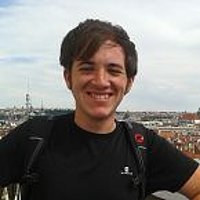


Supervisor: Thomas Rattei
PhD student: Javier Geijo
Group: Computational Systems Biology, Centre for Microbiology and Environmental Systems Science
In the last decade the evolution in sequencing technologies had a substantial impact on environmental microbiology. We now have the capacities to reconstruct partial genomes from environmental samples, being the microorganisms related to N-cycle among them. Since the first bacterial genome was published about 20 years ago in 1995, the number and extent of genome sequencing projects are growing exponentially. The high number of sequences provided by those novel technologies, is shifting the bottleneck from data generation to analysis. They introduce complex computational problems, which need to be solved by a new generation of bioinformatic methods for environmental data analysis in order to characterize these communities and their interactions.
In order to help to understand microbial communities from a computational point of view and thanks to a collaboration with Eva Spieck’s group from Hamburg University, genome-solved metagenomics and metatranscriptomics analysis from three nitrifier-related environmental samples present in three different fish tanks biofilters were studied. Seeking to understand the composition of these biofilms, the results revealed a thriving microbial community with some of its members being nitrifier related. However although several genomes were recover, they were incomplete and therefore new challenges appeared in order to predict complex traits and its application for environmental draft genomes. To utilize these genomes for a better understanding of microbial communities, I needed computational methods which can use the genome sequence of microorganisms to predict their lifestyle and interaction partners. However, the relation between genotypes and phenotypes of microbes is far from trivial. Many traits are genetically and evolutionarily dynamic, as they depend on many genes and can be easily acquired or lost. By extending the previous work towards computational prediction of phenotypic and thanks to a machine learning approach we managed to generate phenotype-genotype association models focused on cell-cell interaction and nitrogen cycling among others. In order to share this predictive power with the scientific community, an online user-friendly platform was established (phendb.org) providing a fast way to predict traits of interest from prokaryotic genomes among with fast genome annotation, a set of models of ecological interest and statistics about how resilient is a model against the loss of completeness and the increase of contamination.
This gained experience leaded to a collaboration with Paul Steiner, one of our DK members, achieving one of the major points of this DK program regarding the expected interdisciplinary collaboration among it members. For this project we managed to resolve a marine snow metagenome at genome level in order to understand seasonality changes in our samples. The recovered genomes were tested with the aforementioned phenotype-genotype association tool in order to predict traits of interest for genome centric metagenomic data.
Going beyond, and knowing that bacteria in ecosystems engage in complex trophic webs based on interspecies interactions, I moved towards the in-silico prediction of those traits with a metabolic modeling approach. During my secondment at the Helmholtz Zentrum München I learn how create metabolic draft reconstructions, solving metabolic gaps to improve our models and how to model cell-cell interaction predictions. These metabolic models lead to understand community behavior under different conditions and in the very end to provide hints to improve cultivation conditions of desired candidates for further isolation.
Co-Supervision: Holger Daims, Andreas Richter, Secondment: Fabian Theis, Helmholtz-Center Munich, Germany
Please find a list of publications here.